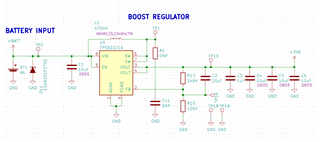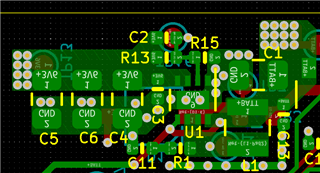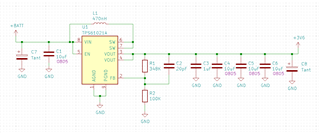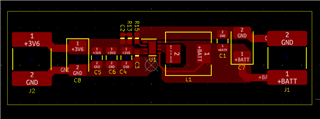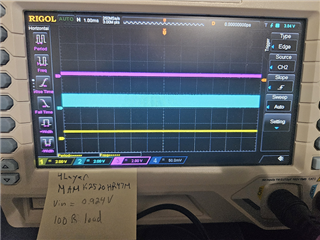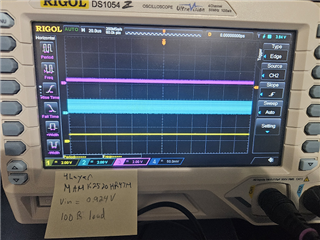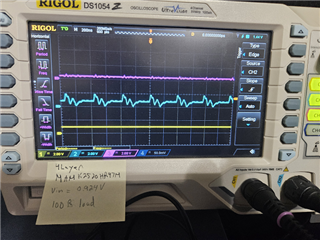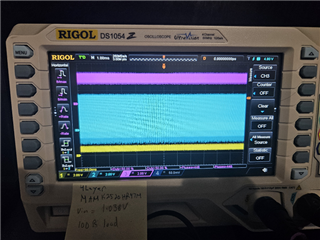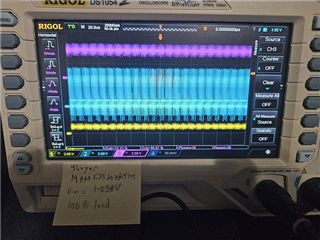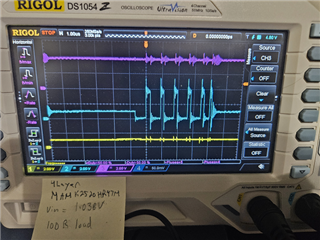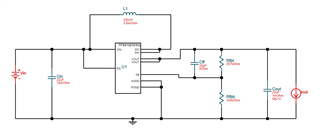Other Parts Discussed in Thread: TPS61299
Tool/software:
I am using the TPS61021A to boost a single AA up to 3.6V. Current 3-15 mA the majority of the time. However, it may go up to 120mA for a few seconds and up to 300mA for a few hundred milliseconds. Web bench and Figure 3. in the datasheet imply that it should have no issue handling the 300mA continuously even just under 1V input. However, in testing, with the circuit hooked up to a bench supply, even 35mA drags the output down to 3.2V when the input voltage goes below 1.4V (which is the high end of the AA battery). The circuit won't even start with a 180mA load if the input is below 1.2V.
I have tried different input and output capacitors and a variety of inductors that meet or exceed the specifications of the ones suggested by Web bench. I've tried multiple capacitors in the 10-22uF, in addition to 100uF capacitors (both ceramic and electrolytic)
Some of the inductors I've tried have included:
AMDLH5030S-R47MT
MHE0503R33M-10
AIP0530GX-1R0MPBDG
MAMK2520HR47M
NRS5030TR47NMGJ
I've tried multiple caps like:
C2012X7S1A226M125AC
LMK325BJ106MD-T
LMK325ABJ107MM-P
LMK212BBJ226MD-T
Schematic is per the Web bench design; layout is tight with components close and continuous copper pours.
Is this still the best part for boosting a single cell application up to 3.6V with loads up to 300mA?


